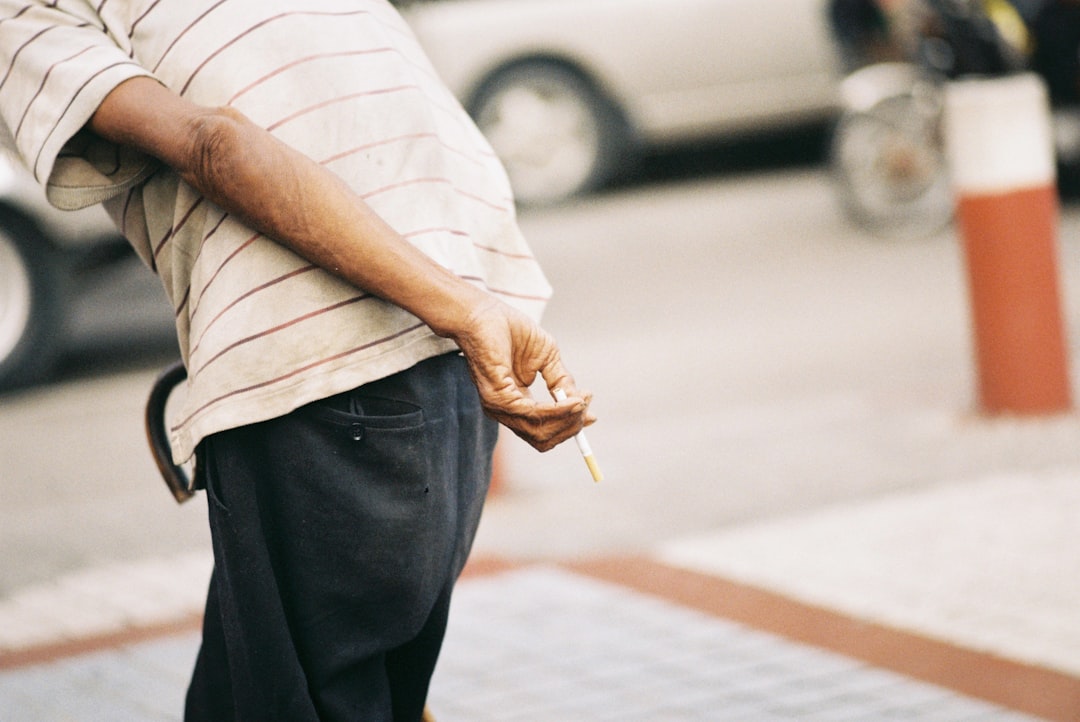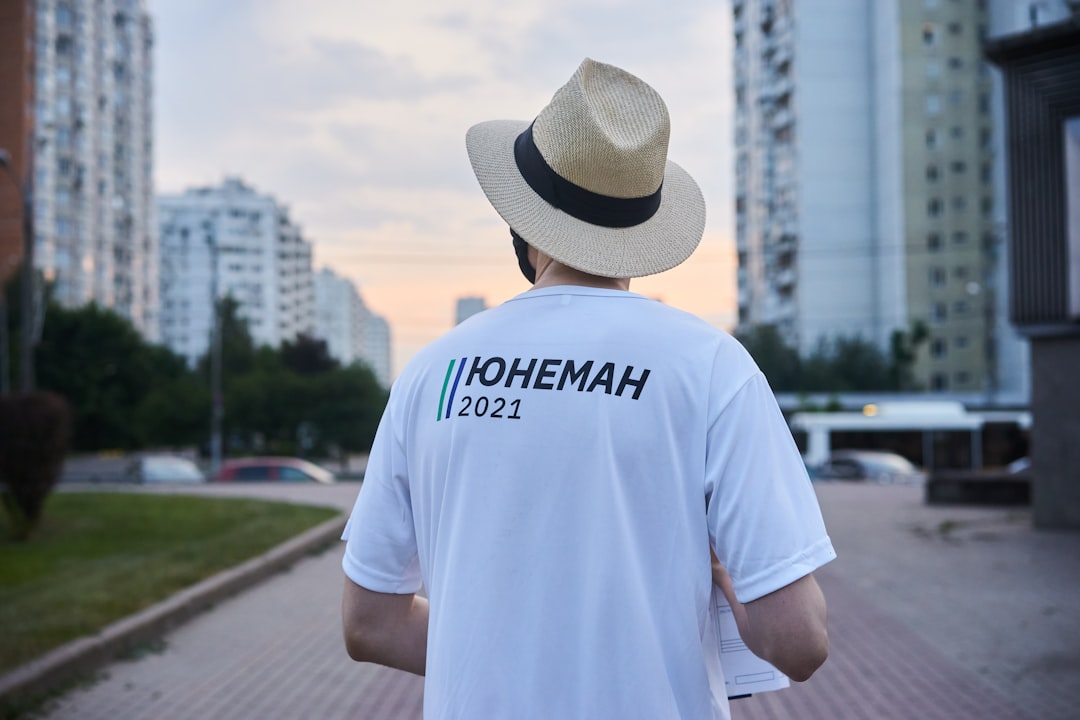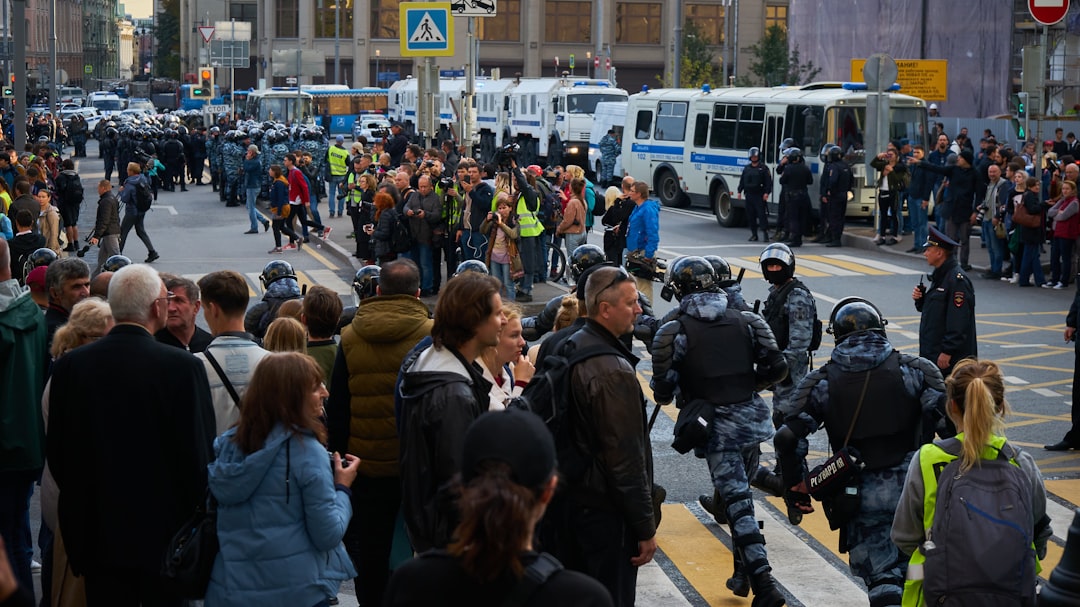The Most Influential Photojournalists of All Time You Should Know
Table of Contents
What is Photojournalism?
Photojournalism is a form of journalism that uses photography as a primary source of information and focuses on the people, their lives and their stories.
There are various types of photojournalists, including documentary photographers, news photographers, and picture editors.
Photojournalism is the art of capturing images of people and events in such a way that conveys a sense of truth, reality and emotion. Photojournalists are able to show the world what they see, but they are also there to make a difference in the lives of the people they photograph. In this way, they can help change the world.
In a photo, it’s the image, not the camera, which makes it art. It’s about capturing an aspect of reality that may not be seen by most people.
You will learn how to use your camera effectively to take images that show the world around you, using simple tools. You’ll explore the different types of cameras you can use, from compact and lightweight digital cameras to more complex cameras, and from single-lens reflex (SLR) cameras to more sophisticated digital cameras. You will learn about light and composition, and you’ll learn how to make decisions about where to go, what to shoot and how to set up a shot. You will learn how to take a picture that will convey a sense of truth, reality and emotion.
You’ll also learn about other ways in which photojournalists have changed the world. You’ll learn about the impact that photojournalism has had on the news, on culture and society, and how it has helped to improve the quality of life for many people.
What does a photojournalist do?
The photojournalist is trained to find a particular story, and then to tell it, from the moment of the event until it becomes a memory. To make this happen, they must be alert, flexible and able to work quickly in dangerous conditions. They are good listeners, keen observers and have a good sense of humor.
The job is both physically and emotionally demanding, and you need to be able to cope with being alone in situations where you can easily get lost, with no-one but yourself to turn to. The photojournalist’s world has a lot of elements that are unpredictable: extreme temperature changes, intense light, high noise levels, danger, and difficult terrain. They must be prepared for anything that could happen in the field and must know how to cope with it.
They must be able to work quickly to make sure their pictures are not taken away from them. Sometimes they may be sent into situations they have not prepared themselves for.
To do well as a photojournalist, you must learn to think like one: to have an open mind; to ask the right questions; to look for signs and signals; to listen intently to people and situations.
What are the 5 basics of photojournalism?
Photojournalism is a term that covers all types of journalism that involves taking photographs. These include everything from photographing a wedding to documenting the aftermath of a natural disaster.
The most important skills for any journalist to master are:
Storytelling – How to put together a coherent narrative from images and text
Documenting – The ability to take a picture that tells a story in its own right
Emotion – Being able to communicate how a subject makes you feel.
Theory – How to interpret and understand what is going on in a picture
Technical knowledge – The ability to work a camera
There are also some other key skills that all photographers should learn, as well as some useful equipment.
Storytelling
One of the main objectives of any journalist, whether a print journalist, broadcast journalist, web journalist or a multimedia journalist, is to tell a good story. Good news stories are those that get the attention of the reader. There are three main types of story:
* Events – Things that have happened and are happening at the time the photojournalist takes the picture
* People – The people and their lives who are caught up in these events. This includes people who have an active role in the story, such as a soldier in a war zone, a child who has been kidnapped or a politician
* Places – These include things such as a building, natural location or even a scene within a place. These can be places where something significant has happened, for example a historical event
If we want to cover an event, we need to be aware of the people and places that will make the most impact in the photo. Some of the things we might think about include:
* Who is the person or people involved?
* What is the event about?
* How important is it to the viewer?
* How much do we know about the event?
* What is the mood?
For example, we might want to show a wedding, but not get too close to the bride and groom, as they are usually very happy. However, it might be more interesting to show the bride and groom looking miserable as they think they are going to be a single parent. We can also look at what the weather is doing. If it is a sunny day, we can show people enjoying themselves in the sun, but if it is raining, we can show people trying to enjoy themselves in a gloomy environment.
Documenting
A key skill in photojournalism is being able to take a picture that tells its own story in its own right. This is called documentary photography. A good image should tell a story without a voiceover or text telling the reader what the picture is about. It is best to avoid showing the subject in a way that makes it difficult to identify who they are, such as having them facing away from the camera.
The quality of the image will also play an important role in its impact on the viewer. High-quality images can often be worth thousands of words, as they have more impact on the viewer. Low-quality images with poor resolution can be hard for viewers to understand what is happening.
Emotion
Being able to communicate how something makes you feel is another important skill that all journalists need to master. This can be done through either the pictures themselves, or through a voiceover. You might be able to show the emotional reaction of a subject through a picture, or a reaction that a subject has to an event through a voiceover. For example, if there is a scene of a war zone, you might show an injured soldier looking at his injuries, or showing the general mood and feeling among soldiers in a war zone. A voiceover about the events can also help make an emotion clear.
Technical knowledge
Photographers should have a good understanding of their camera and equipment. A camera will have settings which allow you to control the camera and change how it works. For example, you can set your camera to take a picture every 5 seconds, or set it to take a picture when you press the button. The settings also allow you to control the aperture (how large a hole is left in the lens) and the shutter speed (how long the camera will remain open).
Also, there are other types of equipment that can be useful in photojournalism. There are different lenses available for different types of image, such as wide-angle lenses that give a wider field of view. There are flashguns for lighting the scene, tripods for holding the camera steady, or stabilizers for handheld work.
Some photographers might be interested in taking pictures with a range of different cameras. A DSLR or Digital Single Lens Reflex camera is often a good choice. This allows you to shoot images in a number of different ways, such as using the automatic settings, which is quicker than having to select each setting individually, or to set up the camera for a particular type of shot, such as a low-light shot.
There are also accessories available that make it easier to carry around with you, such as a travel tripod, or a case to keep your equipment safe when you are travelling.
How can you become a photojournalist?
There are a number of ways to get into photography and journalism. You could choose to study it as a career, work for a local newspaper or magazine, or train as a freelance journalist, photographer, or camerawoman.
If you’re thinking of studying photography or other creative media at university, it is important to find a course that will suit your interests and ambitions. If you are considering a more hands-on approach, a year-long photography course might be ideal. It is also possible to take a short course in photography or related subjects.
You could begin by volunteering at a local weekly newspaper, or taking photographs for an existing publication or website. Some colleges have dedicated journalism courses, or even photography courses that you could take part in alongside your studies. Alternatively, you could start a blog.
There are many online magazines that are free to read and write for. Many of these are run by established photographers, so they may be able to offer guidance, advice and contacts. You could join a local photo club, too. If you want to pursue photography as a full-time career, the best advice we can give is to research what you would like to do, then decide if you are willing to put in the hard work and time to succeed.
If you want to try something else, there are many other jobs that can involve photography, such as graphic design, animation, and film. As well as being creative and fun, photography has a growing number of practical applications. This is one of the reasons it is so popular.
What are the types of photojournalism?
It’s the most popular form of journalism, but also the hardest to master. A photojournalist is a visual storyteller who tells an interesting, compelling story through a photograph or series of photographs. He or she is often in a location with a deadline to deliver the images as soon as possible. In the field, they use the camera to record scenes that are happening all around them, from the world of war and conflict to everyday life.
The photojournalist takes a series of shots, and chooses which ones to include to produce a compelling visual narrative. He or she may decide whether to go straight for the most powerful image and try to get the shot first or capture the scene as it unfolds. A photojournalist uses his or her creativity and artistic ability to tell a story with a series of images.
Types of photojournalism include:
A. News reportage: This is the traditional way of reporting news. It focuses on a particular story or issue. The photographer will follow a story, capturing events as they happen.
B. Documentary: Documentary photography is used to tell a story about something that happened in the past. The photographer uses the technique of photographing an event as it happened or a subject as it is now.
C. Photo essay: This is a series of photographs that tell a story. The photographer uses a series of different images to make a compelling visual narrative, rather than using a single powerful image.
D. Human rights: The photographer is usually working in a place where human rights are being violated and must show images of this without showing people’s faces.
E. War photography: When war is happening or about to happen, photographers are often asked to get shots of the battle and the aftermath.
F. Sports: Sports photographers have access to some of the best places on earth and get amazing photos. They capture the action as it happens and can be involved in sports on a professional level.
G. Landscape: Landscape photographers are often the first to see the beauty of a location before the crowds arrive. They take pictures of natural beauty, which can also include the environment around us.
Learn to be persistent.
It is important to build up a portfolio of your work. This can be hard because you may feel that no one wants to buy what you produce, or that what you create is not good enough. Try not to compare yourself with others. It can also help if you have an understanding employer or friend who will give you honest feedback.
Keep trying.
If you don’t succeed straightaway, try again. Take on a variety of projects to keep interested and excited about photography. Keep a diary of your work and share it with family and friends. If you get bored, think about what you would like to photograph next.
Ask lots of questions.
Try asking those around you for advice about getting into the industry. You could also ask your teacher, mentor or a friend who is in the industry for more information.
Do some research.
It might be that the field you are entering is different to the one you are already familiar with. If you decide to move in a new direction, try to learn about the type of work available, the skills needed and whether you need to train.
Talk to someone in the industry.
Find out what you can expect from a career in photojournalism. Ask at your local press office, which will help you find out if there are any courses in your area. You could also speak to older colleagues, who will be able to give you advice and share their experiences.
Become self-sufficient.
Take on small jobs that you can complete on your own and take pride in your achievements. It will help if you think about the work you do as an opportunity to learn new things and develop new skills.
Work out your finances.
It might be hard to balance work with money, especially if you have a family to support. Try to negotiate your terms with your employer or agree a fixed salary with them. It may be possible for you to combine a part-time job with studying for a photography course or a degree. Talk to the careers advisor at your school or college.
Get practical experience.
You will learn more by doing than reading, so don’t be afraid to get stuck in. Don’t get discouraged if you don’t always get what you want; instead, work out ways of achieving your aims. There are many opportunities to volunteer at local press offices or through agencies that help with placements. You could also take a gap year, working during the holidays.
Have the passion
The most important thing is to have the passion. The second most important thing is to find a job which matches your strengths, skills and interests. Then, you need to have the courage to seek out the best opportunities in your chosen field.
The next step is to begin networking and making contacts. Join clubs, go to events, and take part in activities where you can meet people in the same industry. Take part in your local newspaper society, join a photography association, or get involved in a creative group or online forum. The more opportunities you take, the more likely it is that you will get a chance to work. You could even start with a volunteer position and move into paid work.
Learn new skills.
There are many different jobs in photography – everything from editorial to styling to stills to video and photo-editing. Whatever your career goals are, you need to keep learning about the technology and developing your skills. This includes gaining qualifications, as well as continuing your education through reading books, courses and watching tutorials on websites. Keep an open mind and consider taking a course, or finding a tutor to guide you along the way. You may want to take a diploma or degree course in Photography, Graphic Design or Journalism. These might involve gaining hands-on experience of the industry.
Start small.
If you have no experience, there is no point in starting with a major project such as a magazine cover shoot. Instead, start with something small, like an article, and build up your portfolio. The idea is to get some work experience in as many different areas of photography as possible. Then, when you are ready to move on to bigger projects, you will be in a position to do so because of all the valuable experience you’ve gained.
Go it alone.
Don’t underestimate the value of networking. If you don’t have a friend who can give you a tip about a new job, or who can help you set up an interview, then find someone who does and ask for their advice. You may also want to make use of the services of a professional recruiter. They can offer you tips and advice about getting into your desired career, and they may be able to set up interviews for you. Remember to always put yourself first. It’s easy to get caught up in the excitement of finding your dream job, but take time out to focus on your own needs and interests as well as those of others.
Work on your social skills.
You need to be a good networker if you want to succeed. This means being friendly, understanding other people’s concerns and needs, and being patient when dealing with difficult people. If you are not confident in your social skills, then you need to work on improving them. This could mean joining a photography society, taking part in events, or simply going to networking meetings. Find a mentor who you respect and ask them to act as a sounding board.
Get work experience.
It is no good going through university, gaining an honours degree and then spending a year doing nothing. If you want to work in the field of photography, then you need to do some practical work. You can do this by volunteering for projects, working for free in a newspaper or magazine, taking part in competitions, or finding paid work. The best thing you can do is start at the bottom, get experience, and work your way up. It will be hard work, but it is the only way to build your portfolio and establish your skills.
Take the initiative.
If you know a person who works in your chosen field, ask them for a job. Tell them that you have no experience, but that you’d like to learn more about the industry. Ask them if they have any contacts they can recommend. Don’t just wait around and hope that someone will give you a chance. Take charge and take responsibility for your own career.
Start thinking about it early
It doesn’t matter what type of photography you are passionate about – whether it’s landscape, fashion, wildlife or street photography, if you are interested in learning about it then start thinking about it as a profession early on. It’s far better to get started early than to try and start out as a full-time professional later on. If you’re considering this career, take some classes to learn more about the business side of things.
Think about your lifestyle
Before you take the plunge and become a professional photographer, you should think about your lifestyle. Will you be able to travel and work long hours? What is your schedule like? Will you have time for family and friends?
Consider your strengths
As with any profession, there are certain skills that you are more likely to be good at. You may already have these qualities, but if not you can always develop them by taking classes in areas that you’re not already skilled in.
Think about your weaknesses
Of course, just because you don’t have a particular strength doesn’t mean that you can’t overcome that weakness. If you want to be successful in this career then you will need to work on areas of your skill set that you are not so good at.
Have a plan
To become a professional photographer it will take some hard work, so don’t underestimate the amount of planning that you will need to do. If you are interested in becoming a professional photographer, then think about what you would like to achieve and how you would like to get there.
Take a course
If you’re considering turning your passion into a full-time job, then you should always try and take some classes to learn more about the business side of things. This could be anything from photography classes or workshops to courses in writing or editing.
Network
The best way to find out more information about this career is by networking. Talk to people who are already working in this area, whether they are photographers, journalists, editors or marketing staff. Get their opinions on how to go about making this career happen for yourself.
Conclusion
If you’re considering a career in photojournalism, it’s important that you know exactly what you want to do. If you are not sure, then you need to find out. This is especially true if you want to work at a top photo agency like Getty Images.
Photojournalism requires you to be creative, resourceful, and flexible. And it also involves a lot of time spent working with clients to produce some of the best content on the planet.
You need to have the right mindset and attitude to succeed. But the good news is that there are many ways you can start your career.
For example, you can take your skills and apply them to freelance jobs. You can also consider taking an internship or apprenticeship. And finally, if you have the right qualifications, you can even consider applying for a job at a top photo agency.






2 thoughts on “How to Start Your Career in Photojournalism”
Comments are closed.